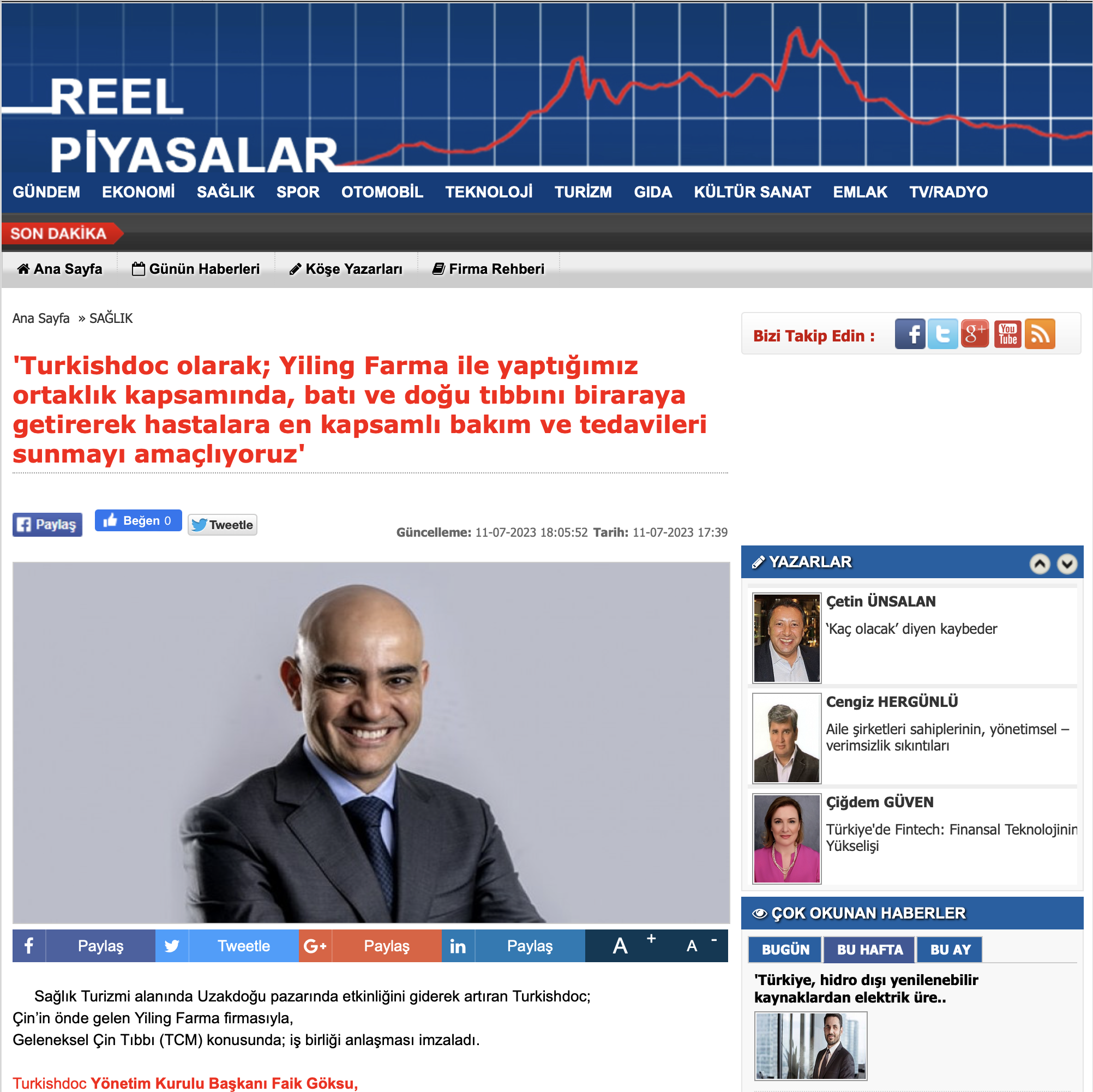Turkishdoc
What Is A Hand Transplant And In Which Cases Is It Performed?
A hand transplant is a surgical procedure offered in some cases in advanced medicine. Most of the time, worse outcomes than hand fractures can occur. One of these is a hand cut. This is where hand transplantation, one of the advanced treatment methods, comes into play. This treatment procedure is a solution for one or two severed hands. Two donor hands and part of the forearms are taken from a deceased person and transplanted into the amputee. However, this treatment method is not widespread today as it is only performed in a small number of transplant centers.
Why Is A Hand Transplant Performed?
Hand transplantation is a surgical procedure to restore the function of hands that have been amputated for many reasons. After this treatment, although the hand cannot fully regain its function, it can still provide some functions to facilitate a person’s daily life. Therefore, we can say that hand transplantation is a treatment method that aims to facilitate a person’s daily life. It should also be noted that this treatment process may take a long time. Because the use of special medications may be mandatory after the surgery. Candidates for hand transplantation are as follows:
- No serious health problems (cancer, heart, kidney, diabetes, etc.)
- Have mental and psychological competence after transplantation
- Not using bad substances such as cigarettes, alcohol, and drugs
- Not being exposed to chronic nervous diseases
- Having no recent infection problems
Hand Transplant Risks
Hand transplant surgery is a serious operation, and some risks may arise. Some risks may occur during or after the operation. Detailed information about the risks of hand transplantation is given below:
Surgical risks: As with any surgery, some risks can occur during hand transplantation. These risks include infection, bleeding, and clotting. The riskiest one is clotting. Clotting causes a decrease in blood flow to the hand. This can be repaired with more serious surgery.
Rejection risks: There may be a risk of rejection when the immune system and the donor’s hand are not compatible. When the donor‘s hand is seen as foreign in the body, it may start to be destroyed by the immune system. In this case, one of two types of rejection can occur acute rejection or chronic rejection.
Acute rejection occurs when the immune system begins to destroy the tissues in the donor’s hand. Symptoms of this risk usually include redness, swelling, and changes in skin color. In rare cases, the donor’s hand can be removed in this risk, which makes the match with the donor stronger. However, acute rejection can usually be controlled with medication. In chronic rejection, it is possible to feel pain in the hand. The hand may even lose its function.
It is also possible to observe some changes in the skin and nails on the hand. If symptoms of the risks that occur after transplantation are observed, the transplant team must be informed. These risks are usually treated with medication. The appropriate treatment method is determined according to the tests and diagnosis.
Immunosuppressant risks: immunosuppressants are medicines taken to minimize the risk of the donor’s hand is not accepted by the body. However, these drugs have a specific and powerful effect. When it comes to immunosuppressant risks, it is possible to observe many side effects. The main side effects include kidney damage, an increased risk of cancer, an increased risk of diabetes, osteoporosis, an increased risk of heart disease, and increased cholesterol.
How To Prepare For Surgery?
To undergo hand transplant surgery, it is first necessary to undergo a medical evaluation process. After X-rays, blood tests, and physical examinations, it is decided whether the person is suitable for this transplant. The risks, benefits, and requirements are explained to the patient by the surgeon before the operation. In particular, the person should be aware that after undergoing this operation, he or she will be monitored for the rest of his or her life. These are not the only factors to be taken into account during the preparation for a hand transplant. Some psychological and mental evaluations are also made. After all, evaluations are completed, the patient is informed about the preoperative, intraoperative, and postoperative periods and is prepared for surgery.
Hand Transplant Process
There is a specific process for hand transplantation, that is suitable for people with middle and upper arm amputations. Before, during, and after surgery are important processes for this serious surgery. The hand transplant processes are detailed below:
Before The Surgery
Before the hand transplant surgery, a suitable donor hand must be found. Once a suitable donor hand is found, some preparations are made for the surgery to be performed shortly afterward. You may be asked to do exercises to strengthen the arm muscles before the transplant. It will be necessary to stay close to the transplant team for a few months after the transplant. A place to stay and someone to help you should be arranged before the operation.
During The Surgery
Hand transplantation is a serious surgery that can take 18 to 24 hours. The donor’s hand is attached to the bones with the help of small metal plates. Special sutures are then used. This method connects the nerves, blood vessels, and tendons. After the donor’s hand is attached to the recipient’s arm, the openings in the skin are closed with sutures.
After The Surgery
Immediately after the hand transplant surgery, you will stay in the intensive care unit. During this period, the patient’s condition is controlled. When the patient’s condition returns to normal in the intensive care unit, he or she lies close to the transplant team. He or she is controlled by the medical team for about a week. The patient’s pain, the condition of the donor‘s hand, and the complications are checked, and the necessary treatment is provided. To use the hand, some exercises are required. These exercises are performed in the hospital with a physiotherapist. The patient is discharged when the condition of the donor’s hand returns to normal. It is not possible to use the donor’s hand immediately. The patient is expected to recover within the first 3 or 6 months.
Hand Transplant Results
Hand transplant surgery aims to repair bone fixation, veins, nerves, main arteries, tendons, and skin. Therefore, it is possible to say that it is a complex operation. For this reason, it is performed by a team of surgeons who are specialists in their field. Although it is a new medical development and rarely performed, it is a highly successful surgical procedure. The most important factor that ensures a successful operation is the choice of the donor limb. The size, color, and ethnicity of the donor’s hand should match the body of the transplant recipient. As with other organ transplants, immunosuppressive drugs are given to prevent the rejection of the donor. The rehabilitation treatment starts two days after the operation, and the hand starts to regain its function thanks to this treatment. In conclusion, although hand transplantation is a serious operation, successful results are achieved. It is important to remember that there is also a continuous treatment process.











